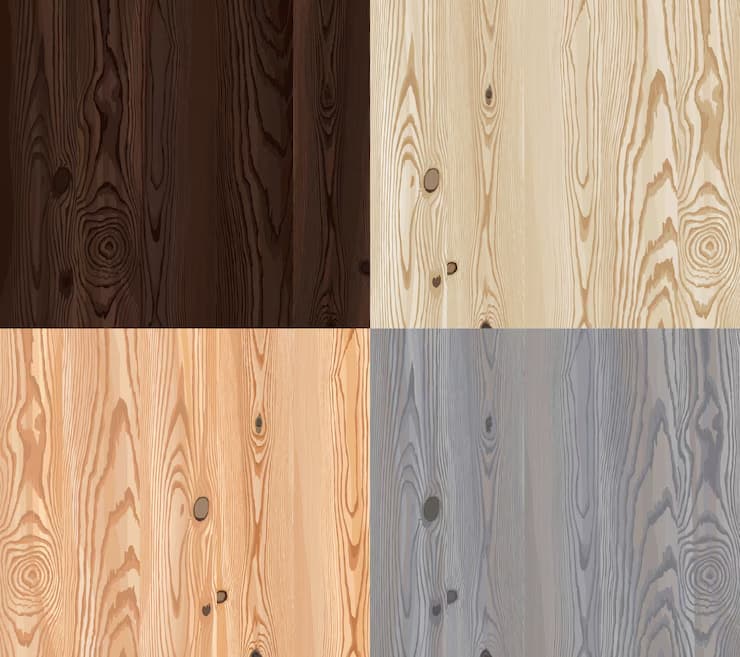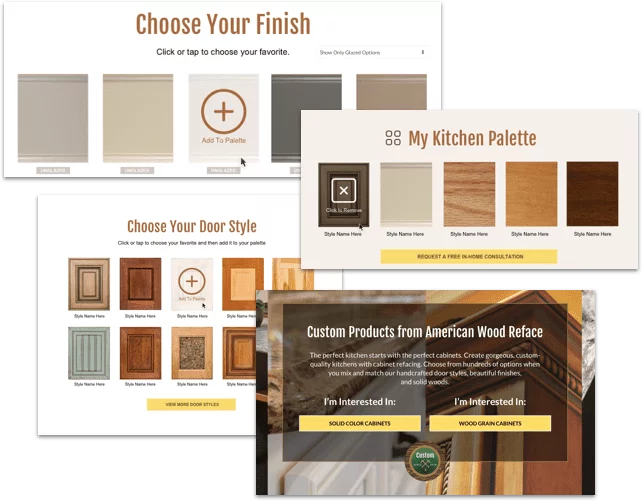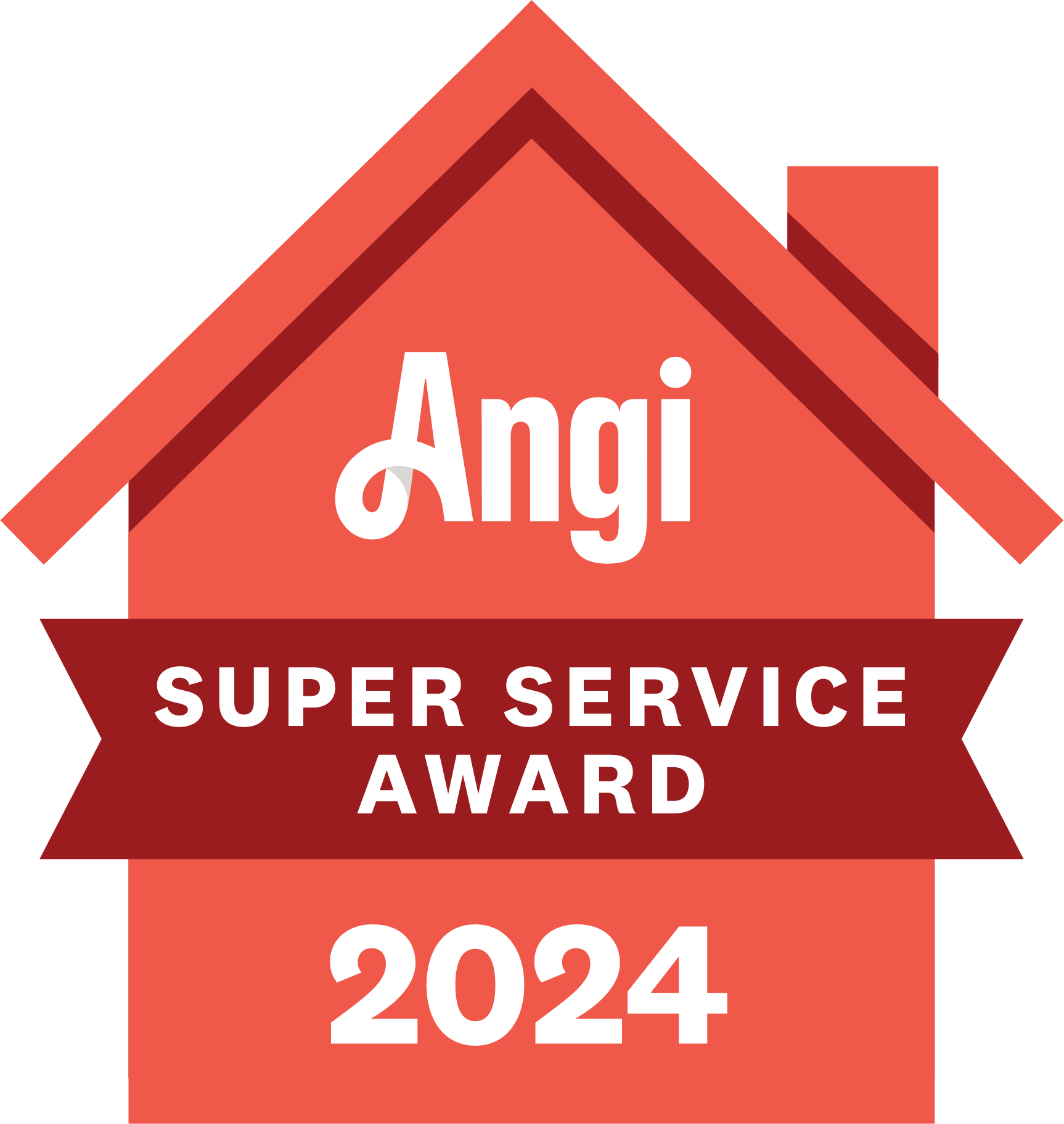
Choosing the perfect finish when renovating your wooden kitchen cabinets requires careful consideration. It’s not merely about picking your favorite colors but understanding how each finish enhances the wood’s natural beauty and durability and creates your desired ambiance.
In this blog, we’ll explore eight kitchen cabinet wood finishes and provide insights into their aesthetic appeal, durability, maintenance, cost, and environmental impact.
1. Paint
Paint offers a wide array of colors and finishes, such as matte or high-gloss, which can give wooden kitchen cabinets a fresh, modern look. Its versatility allows you to match any kitchen style or color scheme easily. Paint is also generally cost-effective, especially if you choose to tackle the project yourself. Expect to spend about $400 on average for a DIY kitchen cabinet painting project.
While paint provides a sleek finish, it may not be as durable as other kitchen cabinet wood finishes. It can be prone to chipping and scratching, particularly in high-traffic areas of the kitchen. Over time, these imperfections can become more noticeable, potentially requiring frequent touch-ups.
Pro Tips
- Clean painted kitchen cabinets regularly. Use a soft cloth and gentle solutions.
- Touch up scuffs or scratches promptly to maintain the cabinet’s appearance.
- Choose low- or zero-VOC paints to minimize impact on indoor air quality.
- Consider professional kitchen cabinet refacing services. American Wood Reface’s color kitchen cabinets have a factory-applied color finish for smoother and longer-lasting applications.
2. Stain

Stain enhances the natural beauty of wooden kitchen cabinets by highlighting the wood’s grain and texture. It offers a range of shades from light to dark, allowing you to achieve a classic, warm look that can complement various kitchen styles.
Like paint, stain is affordable and can be a good DIY project. However, it fares worse than paint in terms of durability as it may require more frequent reapplication to maintain its appearance. It can be prone to fading and discoloration over time, especially when exposed to direct sunlight.
Pro Tips
- Apply a clear topcoat, such as polyurethane, to protect the stain and enhance its durability.
- Regularly clean stained cabinets with a soft, dry cloth.
- Reapply stain as needed to address any fading or wear.
- For a lower environmental impact, select water-based stains and finishes, which generally have fewer harmful chemicals compared to solvent-based options.
3. Glaze
Glaze adds character to wooden kitchen cabinets by creating a translucent, layered effect. This finish adds dimension and depth to a cabinet’s profile and highlights details in the door construction, giving cabinets an antiqued look. Glaze can be applied over both paint and stain, offering flexibility in achieving various styles.
The downside of glaze is that it can be challenging to apply evenly and may require a skilled hand to avoid streaks or blotches. As such, it can be time-consuming, which can impact the overall cost. Also, without a final coat of protective finish, such as polyurethane, it can be prone to scratching, especially in high-use areas.
Pro Tips
- Apply glaze over a properly prepared base coat of paint or stain to ensure even application and better adhesion.
- Work in small sections to maintain consistency and avoid streaking.
- Protect the glazed surface with a topcoat finish, like polyurethane, to enhance durability and prevent scratching.
4. Natural Oil

A natural wood cabinet finish like tung and linseed oil provides a warm, organic look. These oils penetrate deeply into the wood, offering a rich, lustrous finish that highlights the wood’s natural beauty. They create a satin appearance, giving cabinets a classic, understated elegance. They are also relatively eco-friendly, as they are plant-based and contain fewer harmful chemicals compared to some synthetic finishes.
That said, natural oil finishes require regular reapplication to maintain their appearance and protect the wood. They may offer less protection against water, stains, or scratches compared to more durable finishes. Additionally, the cost of high-quality natural oils can be as high as some other finishes, as they need up to five coats to achieve a satin sheen.
Pro tip: Allow each coat to fully absorb and dry before applying additional layers.
5. Varnish
Varnished kitchen cabinets have a hard, protective layer that resists scratches, stains, and water damage, making them suitable for high-traffic areas. Varnish also helps to preserve and enhance the wood’s color and grain. It’s available in various sheens, allowing for flexibility and maintaining a polished and refined look.
Varnish can be challenging to apply evenly and may require multiple coats for optimal protection. It is prone to yellowing over time, which can alter the cabinet’s appearance. Some varnishes also have a strong odor and contain VOCs, which can impact indoor air quality.
Pro Tips
- Make sure the wood surface is clean, smooth, and properly sanded before applying varnish to achieve a flawless finish.
- Use a high-quality brush or applicator to minimize brush marks.
- Opt for low-VOC or water-based varnishes to reduce environmental impact.
- Avoid harsh chemicals when cleaning varnished cabinets.
6. Polyurethane
Polyurethane offers a highly durable finish for wooden kitchen cabinets, providing excellent protection against scratches, stains, and water damage. It enhances the wood’s natural beauty with a glossy or satin sheen, depending on the type used. This finish is ideal for high-traffic areas due to its robust protective qualities.
Polyurethane can be challenging to apply smoothly. Additionally, oil-based polyurethane has a strong odor and longer drying times, which can be inconvenient. It may also turn yellow over time, potentially altering the appearance of lighter wood finishes.
Pro Tips
- Use water-based polyurethane for less odor, faster drying time, and less yellowing, especially for lighter wood finishes.
- Ensure proper ventilation during application to minimize exposure to fumes; consider using a mask if applying oil-based polyurethane.
7. Lacquer

Lacquer provides a smooth, glossy finish, giving wooden kitchen cabinets a sleek and modern appearance. It dries quickly; you can apply multiple coats in a short time. Its ability to be buffed to a high shine makes it ideal for a polished, sophisticated look.
Lacquer is quite durable. However, once it sustains damage like scratches or chips, it can be difficult to hide these imperfections. It also requires a well-ventilated area due to strong fumes and VOCs, which can impact indoor air quality. The application process can be tricky, as lacquer dries very quickly; achieving an even coat without runs or sags requires skill. Additionally, it may need more frequent reapplication to maintain its appearance, especially in high-use areas.
Pro Tips
- Consider using pre-catalyzed or post-catalyzed lacquers for enhanced durability and chemical resistance.
- Opt for low-VOC lacquer options to reduce environmental impact and improve indoor air quality.
8. Acrylic
Acrylic finishes offer a sleek, modern look for wooden kitchen cabinets with a clear, smooth, and glossy appearance. They are highly durable and maintain their clarity and gloss over time. Acrylic finishes are also water-resistant, making them ideal for the kitchen. Additionally, they emit fewer fumes compared to some other finishes, contributing to better indoor air quality.
However, acrylic finishes can be prone to scratches and may require careful handling to maintain their pristine appearance. Repairs can be challenging and noticeable, making it important to avoid damage. They can also be more expensive than other types of finishes, such as paints and stains.
Pro Tips
- Do not use acrylic kitchen cabinets in areas with direct sunlight.
- Avoid harsh chemicals and abrasives when cleaning.
Takeaway
Different kitchen cabinet wood finishes offer different appeal, durability, and maintenance requirements. Carefully consider the pros and cons of each option to make the best choice.
At American Wood Reface, we offer top-notch cabinet refacing services using premium 1/4″ solid wood. Our hand-sanded, hand-stained, multistep catalyzed conversion finishes offer superior shine and durability with industry-leading resistance to stains, heat, and moisture. Available in numerous natural wood grain and solid color finishes, including glaze accents and distressing techniques, you can find the perfect match for your style.
Transform your kitchen with cabinets that have beautiful and durable finishes. Book your free consultation today!


